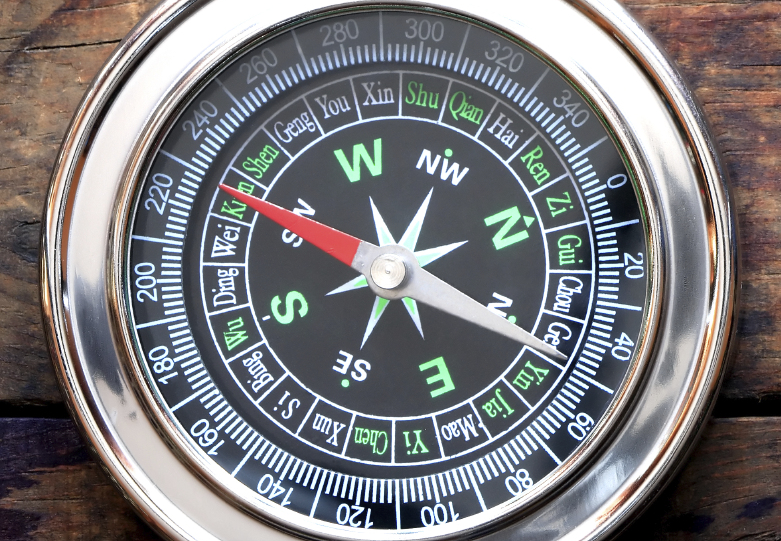Supersensitive Needle Magnetometer
Placed in a magnetic field, an atom wobbles like a top, but a compass needle simply points in a fixed direction. A research team has now shown theoretically that a compass needle actually does wobble in a sufficiently weak field and that this effect could be exploited to make a super-sensitive magnetic field sensor (magnetometer). Their calculations show that such a device could be 1000 times more sensitive than today’s best magnetometers. Researchers say that this connection between macroscopic and quantum-scale magnets could lead to new magnetometry techniques.
An extremely sensitive magnetometer, shielded from known magnetic fields, could be used to look for previously undetected fields predicted by as-yet unverified theories of quantum gravity or dark matter. With better precision, “you never know what you could find,” says Derek Jackson Kimball of California State University, East Bay.
The idea for a magnetometer was born when Jackson Kimball and his colleagues wondered why a compass needle behaves differently than an atom in a magnetic field. When a glass cell of atomic gas is placed in a magnetic field, the atoms’ spin vectors wobble in circles like slanted spinning tops, a phenomenon known as Larmor precession. Today’s best magnetometers measure the frequency of this precession to determine the field strength, down to about a trillion times smaller than the Earth’s field. But a compass needle doesn’t precess. “When I was out in the woods as a Boy Scout, my compass needle always just lined up at north, along the magnetic field,” Jackson Kimball says. To understand the two different behaviors, he and his colleagues modeled a compass needle theoretically and then realized that they could design an extremely sensitive magnetometer based on their results.
The team imagined a ferromagnetic material such as cobalt in a needle shape and made of a single magnetic domain, meaning that all of the atoms’ spins were entirely aligned in one direction. They further assumed that it was placed in a field so weak that the angular momentum of the needle rotating in response to the field was much smaller than the needle’s intrinsic spin angular momentum (the sum of its atomic spins). They found that this needle would precess just like the atoms in a gas and that by measuring the precession frequency, it could make a more sensitive magnetometer.
The researchers also estimated the magnetometer’s uncertainty and found that it could surpass the so-called standard quantum limit that would apply to measurements on atoms in a gas. Repeatedly measuring isolated atoms leads to a range of results, thanks to the uncertainty principle, and the range depends in part on the fact that the atoms are independent of one another. But atoms in the proposed needle are different because their total spin direction is locked to the direction of the needle, whose motion must respect conservation of angular momentum. So their average direction remains the needle’s direction, with a much smaller range of uncertainty. (The Mössbauer effect is another case where using atoms that are part of a macroscopic material, rather than isolated atoms, dramatically improves the sensitivity of a quantum measurement.) The team expects their magnetometer to be 1000 times more sensitive than the current best instruments, able to detect a field smaller than 1 femtogauss.
Experimentally realizing this magnetometer is possible but will be challenging, Jackson Kimball says. He and his colleagues propose a needle about 10 micrometers in length and 1 micrometer in radius. Smaller needles would be sensitive to smaller external magnetic fields. Researchers can already create single-domain, micrometer-scale, ferromagnetic needles out of cobalt, but it will be difficult to entirely isolate the needle. It must be kept in a cryogenic, evacuated chamber, shielded from Earth’s magnetic field, and levitated, perhaps by a superconductor.
While it’s unclear how this ferromagnetic needle could be immediately useful, it is a “powerful idea,” says John Kitching, of the National Institute of Standards and Technology in Boulder, Colorado. The work “merges the microscopic atomic level with the macroscopic things that we can see,” he says. Kitching thinks that such fundamental changes in perspective could lead not only to exciting new inventions, but also to new ways of looking at the Universe.
This research is published in Physical Review Letters.
–Sophia Chen
Sophia Chen is a freelance science writer based in Columbus, Ohio.





